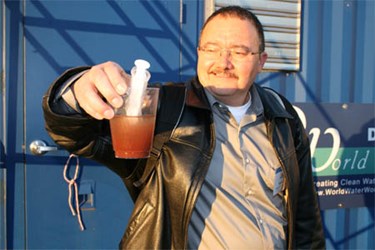WERF Program Gives New Water Technology A 'LIFT'

By Laura Martin

When it comes to technology, the water industry is cautious, says Jeff Moeller of the Water Environment Research Foundation (WERF).
“The water industry, relative to other sectors, is somewhat conservative and risk averse,” says Moeller, the director of water technologies at WERF. “There are good reasons for that, including ensuring public health protection. But it has some consequences, because municipal industry and facility owners miss out on opportunities to improve water quality and treatment and cut costs by waiting to adopt new technologies.”
Often the process of getting new technology implemented at municipal water and wastewater treatment facilities can take 5, 10, or even 20 years, says Moeller. That delay is even more consequential considering the lengthy amount of time it takes inventors to get their technological advancements to the market in the first place.
“That whole process of getting technologies applied and demonstrated at facilities can take so long that a lot of these companies don’t really have the capital to continue,” says Moeller.
WERF, working with the Water Environment Federation (WEF), is trying to speed things up.
The two organizations created the Leaders Innovation Forum for Technology, or LIFT, a joint initiative to generate innovation and help move new technology rapidly into practice. The initiative is focused on the water, wastewater, and stormwater industries.
The initiative, created last year, utilizes several methods to bring about change. These include a technology evaluation program, which aims to identify and screen up-and-coming technology. By bringing together those who create new technology and those in need of it, the program also allows the costs of demonstration and application to be shared.
LIFT also includes a “people and policy” component, says Moeller, which is focused on facilitating necessary change at the federal, state, and local government levels. The aim is to address policy and regulatory issues that hinder new technologies from being implemented.
“We’ve been using the term ‘creating the space to innovate,’” says Moeller. “WERF and WEF are working closely with the EPA and technology providers, wastewater equipment manufacture associations, and others to help remove barriers.”
Education is also a critical part of the LIFT initiative. LIFT includes communication training and outreach efforts relative to new technology and an informal forum for R&D managers to learn from each other.
“When you think about the way you learn about new technologies in your own life, it is usually from a friend, colleague, or family member,” says Moeller. “So allowing that social interaction to happen helps disseminate new innovation.”
Over 200 municipal and industry owners are represented in the LIFT Working Group. Members of the group contribute information from their own experiences that helps guide the program.
The group is broken into five initial focus areas centered on topics that have been identified as high interest for the water quality industry: converting biosolids to energy, creating energy from wastewater, shortcut nitrogen removal, phosphorus recovery, and digestion enchantments.
LIFT also utilizes the expertise of a volunteer pool of WERF consultants, equipment manufacturers, state regulators, and members of academia to help identify and evaluate new technologies for demonstration and adoption.
“You really need a technology pull and a technology push for innovation. We view this program as driven by municipal and industrial facility owner needs,” says Moeller. “On the pull side, we have been working with these facility owners to identify their high priority interests and form focus groups around them.”
These efforts have already paid off. Recently, LIFT brought together the Metropolitan Water Reclamation District of Greater Chicago (Chicago-MWRD) and the Wastewater Reclamation District in Denver (Denver-MWRD), who had individually been exploring sidestream deammonification technology. They both highlighted their respective pilot studies through LIFT and realized their common interest. The connection helped the utilities align efforts and leverage benefits from each other’s studies.
Chicago-MWRD was able to move ahead with design and implementation of a full-scale ANITA Mox process, which is a new energy-efficient nitrogen removal process, and Denver-MWRD has benefitted from the efficiency of technology evaluation.
This month, LIFT will launch its first “technology scan,” which asks inventors and technology developers that have pre-commercial or newly commercialized products to apply to be part of demonstrations and applications for the LIFT Working Group. Those accepted will have the opportunity to present their new products or processes directly to potential customers and supporters. The November scan will specifically call for technologies focused on digestion enhancements and thickening and dewatering enhancements. The LIFT program is not designed for technologies that are already established, says Moeller.
“We are interested in things that are still under development that may need a pilot demonstration, those that are getting ready to be commercialized and looking for a full-scale demonstration, and newly commercialized items that need to get out there and gain early adopters,” he says. “It is a way to help the end users identify new and innovative technologies that are available to help them solve their challenges.”
For more information about the technology scan or to learn more about LIFT, visit http://www.werf.org/lift.
